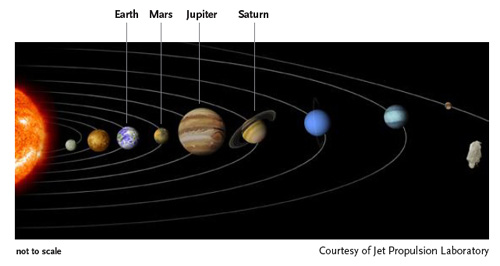Mission: The Search for Life Mission Briefing NASA is developing the technology necessary to search for life on other worlds. Astronomers have discovered more than 100 planets orbiting other stars in the Milky Way galaxy. They are called extrasolar planets because they reside outside our solar system. These planets are large, gaseous worlds like Jupiter and Saturn. Astronomers call them gas giants. Unlike Jupiter and Saturn, many of the known extrasolar planets orbit very close to their parent stars. Because of their composition and orbit, these planets are unlikely to harbor life. Scientists believe that Earth-like planets orbit other stars, and NASA missions are being designed to search for such worlds. Do any of these planets have the potential to harbor life? What factors determine a planet's potential for developing life? Keep in mind that astronauts cannot travel to them—the planets would be orbiting stars located very far away. Astronomers have found that light from a star carries information about its chemical composition. By using spectroscopy, a technique that spreads light into its component wavelengths (a spectrum), scientists can determine what chemicals make up a star. (Each element or compound produces characteristic features in the spectrum.) Scientists can also obtain spectra (plural of spectrum) from planets. By analyzing a planet's spectrum, astronomers can determine the composition of the planet's atmosphere. Scientists want to build instruments that can detect Earth-like planets. They want to recognize habitable worlds and distinguish planets with the potential for life from those without any chance for life. Because the solar system is the only planetary system known to harbor life, it will be used as a model. Your mission is to learn how planetary spectra may be used as a tool to explore whether other worlds are hospitable for life, and to determine whether a mystery planet has the potential for life. Procedure
Seeking Other Earths Our solar system includes both terrestrial planets, like Earth and Mars, and gas giants, like Jupiter and Saturn. Astronomers have found more than 100 gas giant planets orbiting other stars in the Milky Way galaxy; could any of them be in solar systems that have terrestrial planets suitable for life? 
|